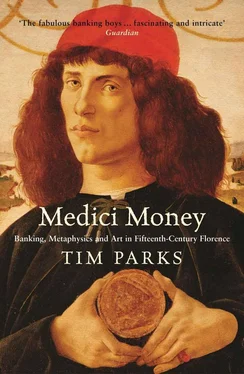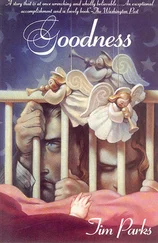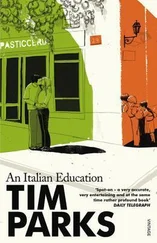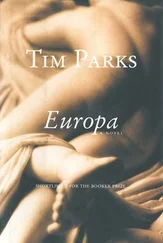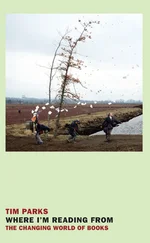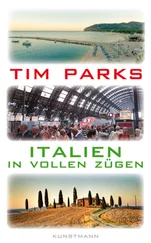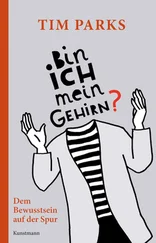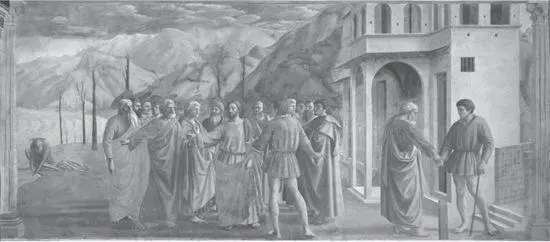
Masaccio’s The Tribute Money, in Santa Maria del Carmine (the Brancacci chapel). In response to Jesus’ command, Peter, on the far left, recovers a coin from the mouth of a fish and, on the far right, hands it over to the taxman at the city gates. Tax evasion was endemic in fifteenth-century Florence .
But to read perhaps thirty or forty pages is to get a little bored. Isn’t there rather a lot of the same thing, of wars and betrayals and conspiracies? Even Machiavelli is weary. “While these things were toiling on in Lombardy,” he doggedly starts a new paragraph. “While this war was dragging on to no avail in the Marches….” Do I need to keep reading, you wonder? Yes. For at some point or other of the 360 pages you will be overwhelmed by a sense of vertigo, a delirium of treachery, deceit, wasted ingenuity, and inexhaustible avarice. This is the book’s revelation. Absolutely nothing is stable. People seem to be taking a certain pleasure in betrayal and complex trickery, almost as if such vices were a novelty. Yet for all the twists and turns of combat and conspiracy, at a deeper level nothing really seems to change. Naples, Rome, Florence, Venice, and Milan remain independent from the beginning to the end of the century. As far as the smaller states are concerned, each new military campaign is just another shake of the kaleidoscope. It’s difficult to fix any one pattern on the mind. Here below, tortuous as they will seem, are the events from 1420 to 1434 that catapulted Cosimo de’ Medici from successful banker to political exile, then indispensable leader.
WHILE PRETTY SLAVE Maddalena treats Cosimo to Circassian pleasures in Rome, and Giovanni Benci opens the first Medici branch north of the Alps in Geneva, Filippo Visconti, duke of Milan, attacks Genoa. To avoid intervention from Florence, the Milanese duke has made a preemptive peace treaty establishing two spheres of influence: Lombardy and Genoa for Milan, Tuscany for Florence. The duke captures Brescia to the northeast and Genoa to the southwest. Fine. But all of a sudden he has an army down in Bologna as well, way over to the east, and now he’s getting involved in a succession dispute in Forlì near the Adriatic coast. Fearing encirclement, the Florentines raise taxes and hire mercenaries. The treaty is dead.
One says the Florentines do this or that, but it must be understood that while the duke makes decisions rapidly and alone, the Florentines have all kinds of republican mechanisms in place that allow them to argue and procrastinate for days and weeks. The dominant Albizzi family is for war. Giovanni di Bicci is against it. Giovanni di Bicci has just been offered the honor of becoming count of Monteverde (a citadel to the south of Florence) by Pope Martin, no doubt in recognition of the very large loan that Martin somehow never gets around to paying back. Giovanni turns down the title. By Florentine law, a titled nobleman and his family are excluded from government. The Medici thus serve notice that they will not renounce their place in public affairs. Since the costs of any war fall mainly on the plebs — which in fifteenth-century Florence means the small-time artisans, woolworkers, shopkeepers, and so on — Giovanni’s antiwar position is popular.
The duke of Milan (or his mercenaries) grabs the towns of Forlì and Imola to the east of Florence. The Florentines besiege Forlì. To draw off the siege, Milan attacks Zagonara. This small town is Florentine property, closer to home. The Florentines abandon Forlì and head for Zagonara. It’s raining heavily. The men march for hours through thick mud and are routed on arrival. Thousands of horses are lost. “Nonetheless, in such a defeat, celebrated in all Italy, no one died except Ludovico degli Obizzi together with two of his men who fell from their horses and drowned in the mud.” Or so says Machiavelli.
Not all condottieri are equal. As with sportsmen, there are regular players and there are stars. The Florentines get serious and hire Niccolò Piccinino. He’s expensive. New taxes have to be raised. This time they begin to hit the rich as well. This wasn’t part of the original plan. “It pained them,” says Machiavelli of the wealthy families, “not to be able to carry on a war without loss to themselves.” To make the tax unpopular and so have it withdrawn, certain subversive citizens insist that it be collected with the utmost severity. More people are killed during the tax collection than at Zagonara. Afraid that their grip on power is weakening, the Albizzi start to plan a coup that would restrict government to an inner circle of the most powerful families. But Giovanni di Bicci refuses to come on board, thus killing the project before it’s off the ground and making himself even more popular among the plebs. Meanwhile, Milan captures all Florentine citadels and outposts in Romagna to the east of the city. The situation is getting desperate.
The expensive Piccinino and his men are sent on a mission to “persuade” the nearby lord of Faenza, ex-ally of Florence, to join them against Milan. Instead, Faenza fights the condottiere and, despite Piccinino’s star status, defeats and captures him. Undismayed, Piccinino the prisoner manages to talk the lord of Faenza round. He will join the Florentine side after all. Rhetoric is an effective weapon. Once released, however, Piccinino himself changes sides and goes off to fight for Visconti, who has offered him more money. Money is even more effective. The winter break in hostilities, it should be said, often amounts to a sort of condottiere transfer market. Fees are rising. Some mercenaries hold discretionary accounts with the Medici bank. Or indeed other banks. What’s the point of buying property with booty if someone else can then seize it from you? Money is more easily placed beyond the reach of enemies. The line between war and business is getting blurred.
“Bewildered by their frequent losses,” as Machiavelli says, the Florentines now make the classic step of calling on the Venetians. The Venetians hesitate, unsure whether their preferred condottiere , Francesco Carmignuola, hasn’t perhaps defected to Milan along with Piccinino. When Visconti tries to poison Carmignuola, it’s clear that he has stayed loyal after all, and a deal can go through. Again the world is wishfully divided up: eventual gains in Lombardy will go to Venice, in Romagna and Tuscany to Florence. Having recovered from the attempted poisoning, Carmignuola is in venomous mood and captures Brescia, right in the center of the northern plain. A huge prize, for Venice. The Florentines are not overjoyed.
IT’S 1426 AND once again the coffers are empty, the city’s debt is spiraling. Since the way of the world is that government is in the hands of florin people, it is piccioli people who end up paying most of the taxes. There are more of them. Paying a larger proportion of their wealth than the rich, they are discouraged from social climbing and the natural order of things is maintained. After an attempt to impose direct and proportional taxation a century before, in the idealistic days of the early republic, most taxation is now indirect. Carry a bucket of fish to town, you’re taxed. Bring a cart of wheat to mill, you’re taxed. The city walls are not just there to keep out enemies. As in Masaccio’s, The Tribute Money , the tax collector waits at the gate. And don’t try to hide that goose under your cloak, because he will check!
But it’s not enough. Yes, there are plenty of piccioli people, but as we recall, it takes 80 or 90 piccioli to make a florin. And quite a few thousand florins to pay a mercenary army. During the thirteenth and fourteenth centuries, since the wealthy really did not want to give anything away, the government experimented with loans. The merchant, or banker, puts a handsome sum in the public coffers and collects a handsome interest rate (or gift) in return. Officially, it is just 5 percent, but as an incentive to lend to the state, you get 300 florins’ worth of debt certificates for every 100 florins paid. So really you’re earning 15 percent. The indirect taxes that the plebs are paying on salt and eggs and meat and wine and fats and oils are now funding the interest rates of the better folk who put down their lump sums years before. It’s charming but it can’t last. It doesn’t add up. Mid-fourteenth century, the public debt has to be consolidated. The government announces that from now on, interest returns on tax loans will only be paid when and to the extent possible. As a result, disappointed lenders in need of ready cash start selling their debt bonds to those speculators who can wait. The Dominicans say this is usury and the Franciscans say it is not. What do we have different religious orders for, if not for a second opinion?
Читать дальше
